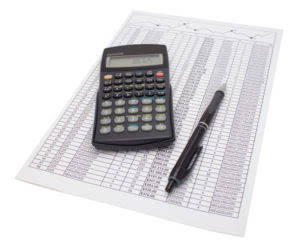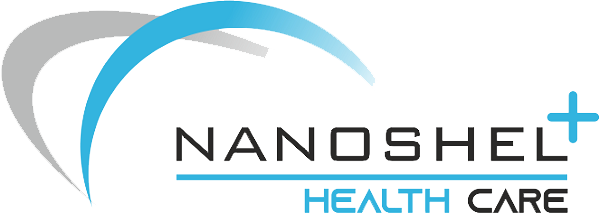
The expenses involved in this transformation are known as the conversion cost of a product. From the definition, the conversion cost is a term used to refer to the costs incurred by a company while converting raw materials into furnished products that are up for sale in the market. Conversion costs include labour, raw material, machinery, etc, and other manufacturing overheads in the product’s manufacturing. In short, it is the cost of a product incurred by a company while manufacturing it. Identify the direct labor and manufacturing overhead costs for a given period.

How to Record and Report the Conversion Cost in the Financial Statements?
Conversion cost is a useful tool for cost accounting and management, and it can help to improve the performance and profitability of any business. In such cases, it is time-saving to calculate equivalent units and unit costs by combining direct labor and manufacturing overheads instead of doing separate calculations for the two cost items. In summary, conversion cost bridges the gap between raw materials and finished products. By understanding and managing conversion costs effectively, businesses can enhance their competitiveness and profitability. Remember, it’s not just about making products—it’s about doing so efficiently conversion cost formula and economically.
📆 Date: May 3-4, 2025🕛 Time: 8:30-11:30 AM EST📍 Venue: OnlineInstructor: Dheeraj Vaidya, CFA, FRM
Manufacturing overheads used in calculating conversion costs are the overheads that cannot be attributed to the production process or a single unit in production, for example, rent or electricity. By analyzing conversion costs in this manner, businesses can identify cost-saving opportunities, optimize resource allocation, and make informed decisions to enhance their overall operational efficiency. Remember that while direct conversion costs are straightforward, indirect costs require Grocery Store Accounting thoughtful consideration and strategic allocation. They may not be as visible as direct costs, but their impact on profitability is undeniable.
How to Calculate Conversion Cost Formula Example
- We will also provide some examples and insights from different perspectives.
- In contrast, conversion costs are focused on the direct labour costs and the costs involved in the indirect factors which affect the manufacturing and production system like electricity, factory insurance, etc.
- Sometimes individuals become managers due to their knowledge of the production process but not necessarily the costs.
- By understanding the nuances of indirect costs, companies can make informed decisions and optimize their production processes.
- Once you assess conversion, you can use the information to better allocate your budget and improve returns.
- Direct labor costs refer to the wages paid to workers directly involved in production.
They also help to allocate the costs of goods sold (COGS) and inventory valuation. In accounting, conversion costs represent the money spent on turning raw materials into finished products. This includes wages for workers (direct labor costs) and other production expenses (manufacturing overhead costs). In simpler terms, direct labor costs are the payments to the workers doing the hands-on work, while manufacturing overhead costs are the behind-the-scenes expenses that keep the entire production process going. Both are essential components of conversion costs, giving a complete picture of the money spent to transform raw materials into finished products.
Importance of Conversion Costs

The conversion cost, when used in conjunction with prime cost, helps reduce waste and gauge other operational inefficiencies that may be present within the manufacturing facility. If your conversion goal is more than just a website visit, look at your landing pages. Confirm that the landing page is relevant to the viewers and encourages them to complete the action that is your goal. For example, if your conversion metric is signing up for your email list, the signup form should be prominent. How to assess conversion cost if it is watching a video, the video should be prominent.
Prime Costs Vs. Conversion Costs – What are the Key Difference?
- Conversion costs are the labor and overhead expenses that “convert” raw materials into a completed unit.
- The management team wants to reduce the time it takes to produce each widget to increase overall output.
- In simpler terms, direct labor costs are the payments to the workers doing the hands-on work, while manufacturing overhead costs are the behind-the-scenes expenses that keep the entire production process going.
- Conversion costs are beneficial, especially for manufacturing businesses which have to deal with conversion on a large scale daily.
- She has over a decade of experience writing about financial topics, including retirement, investing, Social Security, and real estate.
- By understanding and managing conversion costs effectively, businesses can enhance their competitiveness and profitability.
Sometimes individuals become managers due to their knowledge of the production process trial balance but not necessarily the costs. Managers can view this information on the importance of identifying prime and conversion costs from Investopedia, a resource for managers. In the Peep-making process, the direct materials of sugar, corn syrup, gelatin, color, and packaging materials are added at the beginning of steps 1, 2, and 5. While the fully automated production does not need direct labor, it does need indirect labor in each step to ensure the machines are operating properly and to perform inspections (step 4).

How to Apply the Conversion Cost Formula and Per Unit Cost to Different Scenarios?

By understanding the nuances of indirect costs, companies can make informed decisions and optimize their production processes. Hence, using conversion costs is an efficient way of calculating equivalent units and per unit costs rather than separately calculating direct labor and manufacturing overheads. You could use that information as an inspiration to make changes and see if you can improve it. Bruce’s Bike Company is a bicycle manufacturer that specializes in high-end 10-speed bikes. Bruce is trying to figure out what his conversion costs are for the quarter in order to estimate his finished inventory for the interim financial statements.
